Table of Contents
Visual communication has become the most immediate means of effectively reaching the audience today. Visual storytelling, the ability to tell a story through images, has demonstrated a significant impact on corporate communication and beyond.
Get with just one click:
- Captivating content that grabs your audience’s attention
- Unmatched creativity for emotionally engaging content
- Trend-savvy copy to climb the search rankings
People are increasingly drawn to visual content that captures their attention and conveys messages in an immediate and emotional manner.
This phenomenon has prompted companies to invest more and more in visual communication, including high-quality photos, engaging videos, and captivating graphics.
In an increasingly digitized world, imagery has become a universal language that transcends linguistic barriers, reaching a broader audience and enabling businesses to stand out from the competition.
In this article, we will explore the enormous potential of visual communication and delve into how visual storytelling influences online marketing and communication.
What is Visual Storytelling
Visual storytelling is a narrative technique that utilizes visual elements such as images, drawings, photographs, infographics, and videos to communicate a story in an engaging and emotional way.
This approach captures the audience’s attention through the effective use of visual media, creating an emotional connection between the message and the recipient. Visual storytelling is widely used in marketing to convey the values of a brand or a company in a more engaging and memorable way.
The benefits of visual storytelling include the ability to engage the audience at a deeper level, making content memorable and conveying complex messages in a simpler and more effective way.
This technique proves particularly effective in the digital environment, where users’ attention is often limited and fleeting, and the use of visual elements can make a difference.
In the digital realm, the competition for audience attention is extremely high. People are continuously bombarded with information and content, so it is essential to employ a communication strategy that stands out and leaves a lasting impression on people. The creative and engaging use of visual elements in visual storytelling is one of the most effective ways to achieve this goal.
History and Origins of Visual Storytelling

The combination of images and narration has been used since ancient times to communicate stories and messages. For instance, ancient civilizations such as the Egyptians used hieroglyphics to tell stories and convey information.
Visual storytelling is, therefore, a technique with millennia-old roots that has followed the evolution of our culture through time, of which we can provide a historical overview in 7 phases:
- Cave Paintings: One of the earliest forms of visual storytelling dates back to prehistoric times, with cave paintings. Ancient civilizations painted scenes of hunting, rituals, and other events on cave surfaces, using mural paintings to tell their stories.
- Manuscripts: In the Middle Ages, illustrated manuscripts, known as “illuminated manuscripts,” were popular and combined written text with detailed illustrations to tell religious stories, myths, and legends.
- Comics: In the 19th century, comics and comic strips became popular, using illustrations to tell humorous or adventurous stories. This medium contributed to defining modern visual storytelling.
- Cinema: The advent of cinema revolutionized the way stories are visually told. Movies combine moving images, sound, and dialogue to create engaging narratives.
- Photography: Photography opened up new possibilities for visual storytelling. Photographs can capture significant moments and convey powerful emotions.
- Digital Era: With the advent of the web and social media, visual storytelling has become omnipresent. Companies use images, videos, and infographics to engage the audience and share their story in a more accessible way.
- Marketing: In contemporary marketing, visual storytelling is a key element in brand building. Companies use visual content to create emotional connections with consumers and communicate their values and mission.
While it has always existed, with the advent and evolution of technology, the spread of the internet, and social media, visual storytelling has taken on an even more significant role today.
Today, businesses, marketers, and content creators leverage the potential of videos, images, infographics, and other visual elements to engage their audience more effectively and emotionally. This approach has become an essential part of the communication strategy for many organizations and is constantly evolving with new trends and technologies.
The Evocative Power of Visual Storytelling
Visual storytelling is now one of the most widely used forms of communication based on the use of images to tell stories and convey messages. Living in the digital era, images have a strong influence on our communication experience. Thanks to their ability to transcend linguistic and cultural barriers, images make messages more accessible and understandable to a broad and diverse audience.
Furthermore, visual storytelling can capture the user’s attention and make them more likely to interact with the content.
Visual storytelling represents an extremely powerful communication tool. By harnessing the impact of images, it is possible to create meaningful connections with the audience, effectively convey messages, and emotionally engage viewers.
The use of images, combined with other visual and auditory elements, allows for engaging and persuasive storytelling, making the message more impactful. Visual storytelling is a perfect fit for the digital age we live in, where we are bombarded with a vast amount of information.
The combination of images, text, and sound that characterizes visual storytelling enables the creation of an engaging and interactive experience for the audience. Through the control of timing, transitions, and visual movements, one can guide the viewer’s attention and create suspense or intense emotions. Additionally, the use of colors, fonts, and layouts can contribute to conveying a specific message or atmosphere.
Images have the ability to convey feelings, evoke emotions, and create an emotional connection with the audience. This is because they can communicate in an immediate and engaging way, promoting a deep connection with the audience.
But visual storytelling is not only about entertainment and advertising; it is also a valuable tool for education and awareness. Through the use of engaging and narrative images, complex information can be communicated in a simpler and more accessible way.
The use of images and other visual elements helps increase the emotional impact of the story. Images have the power to evoke emotions and make the story more engaging for the audience. Moreover, images can be easily remembered and associated with the message, ensuring a higher memorability of the story.
Visual Storytelling: Key Data and Statistics
The visual attention of online users is the key element to consider for marketing and content creation. According to research, 40% of online users react positively to visual content such as images and videos, making them effective in engaging the audience. Furthermore, the attention span of online users is decreasing, emphasizing the importance of capturing users’ attention quickly and effectively.
To enhance visual attention and engage the audience, many companies are using neuromarketing, which relies on understanding the human brain to create visually appealing content. Some tips include using the science of vision and neuromarketing to build effective visual content.
In the essay titled ‘12 Statistics to Know About Visual Content Marketing,’ published by Studio Samo, crucial data regarding the field of visual content marketing emerge, confirming the undeniable importance of this form of communication.
It is undeniable that visual content captures the audience’s attention. The attractive power of images and graphics is extraordinary. Furthermore, scientific research unequivocally establishes that the human brain processes visual content much more quickly than text.
One astonishing statistic reveals that 93% of human communication is based on visual content. This data highlights how deeply rooted the predominance of images is in our everyday communication. Moreover, the inclusion of compelling images and illustrations can increase views by 94%, demonstrating their power in capturing the audience’s attention.
The presence of visual elements on social media is associated with a significant increase in engagement, while on websites, it contributes to prolonging user stay.
The article ‘Social Media Trends 2023: User Behavior,‘ published by Futuraweb, highlights significant changes in online user behavior.
Some data immediately illustrate how the digital world is becoming increasingly central in our lives, influencing most of our habits, and how important it is for those who want to convey a message, promote a brand or a product to rely on this technique. The combination of this information unequivocally leads to the conclusion that an effective practice of visual storytelling can offer considerable advantages in achieving our goals.
We know that the use of mobile devices, social media usage, video viewing, e-commerce, purchasing products through mobile advertising, and app usage are all activities on the rise among users.
Understanding this information and having the ability to leverage it allows for investing in the right channels.
Essential Ingredients of Visual Storytelling
Visual storytelling relies on a combination of visual elements such as photographs, illustrations, and graphics, along with text and sound, to engage and captivate the audience.
Its strength lies in the ability to capture the audience’s interest immediately and effectively convey the desired message. Using high-quality images and videos, along with compelling narration, can encourage the audience to retain and remember the information over time.
Moreover, visual storytelling allows for the transmission of complex messages in a more accessible way through the use of visual elements that simplify abstract or difficult-to-understand concepts.
The components that make up visual storytelling undoubtedly include all visual and figurative elements such as photographs, videos, drawings, infographics, and everything that can be useful for telling a story in an engaging and memorable way.
To create effective visual storytelling, it is crucial to:
- Know the brand.
- Understand the colors that represent it.
- Have a well-defined narrative scheme.
- Use elements that make the brand recognizable in a short period.
Visual storytelling can be used in various contexts, such as branding, advertising, or corporate presentations. In any case, it is essential that visual storytelling reflects the brand’s identity and values to strengthen the emotional connection with the audience.
Another fundamental aspect of visual storytelling is the use of a narrative intertwined with the visual element. The story must be told accurately and engagingly, bringing the audience closer to the brand and its values. It is important to create a balance between images and words, ensuring that both elements integrate harmoniously to convey the desired message.
Considering the target audience is also essential when creating visual storytelling. It is necessary to understand who the story’s recipients are and what engages them. This way, it will be possible to adapt the visual language and narrative tone to their sensitivity, achieving greater emotional resonance and memorability.
The Artisans of Visual Narratives: The World of Visual Storytelling
Storyteller: The professional storyteller, known as a storyteller, is currently one of the most sought-after profiles in the digital job market. Although the term ‘storyteller’ suggests the simple ability to tell stories, this figure requires expertise that goes far beyond mere narrative.
The storyteller is an expert in creating corporate narratives with the goal of engaging the audience and promoting products or services in an engaging way. Their task begins with a careful analysis of the target audience, based on which they develop a storytelling strategy. This personalized approach involves choosing communication channels, defining the appropriate language, creating persuasive characters, and selecting relevant content, all aimed at evoking emotions in potential customers. In this way, the storyteller transforms into a genuine architect of narratives, creating a meaningful connection between the company and its audience.
Content Manager: The Content Manager assumes the responsibility of planning, creating, and managing a wide range of digital content, including texts, videos, images, and more, intended for use on company or brand websites, social media, and blogs. Here’s a summary of the broad responsibilities and duties of a Content Manager:
The Content Manager plays a central role in attracting the audience, increasing corporate credibility, and stimulating audience interest in products and services. Furthermore, maintaining the flow of traffic to the company’s website is a crucial responsibility.
Social Media Manager: The key role of the Social Media Manager in a company involves managing marketing and advertising strategies on social platforms. They are responsible for developing strategic plans, setting clear objectives, and planning the necessary tactics to achieve them. They create and enhance brand awareness through social channels by developing and disseminating relevant content for the target audience across various social platforms.
Visual Designer: The visual artist dedicated to designing graphic and multimedia content to convey messages and information through the power of imagery. This discipline uses a variety of elements, such as images, color palettes, typography, and videos, to create visual content that serves communication purposes. Visual design permeates our daily lives, as it surrounds us with messages, symbols, and images of profound significance.
Additionally, the Visual Designer can work on a wide range of platforms, ranging from websites to games, from films to electronic devices, contributing to defining the visual appearance and communication of brands and products.
Useful Tools for Creating Visual Storytelling
Editing, graphic, and video software is essential for creating and modifying visual content, both for professional and personal purposes. There are numerous options on the market, each with unique features.
These tools will enable you to create captivating and high-quality visual content for your brand or project. You can explore them to find the ones that best suit your needs.
Here is a list of the best tools and useful resources for creating quality visual content:
Canva

Canva is a beloved tool among many creators and marketing professionals. With Canva, you can create images and graphics easily and intuitively. It offers a wide range of templates and customization tools to help you create engaging visual content. You can learn more by reading our article on AI tools for Graphic Design.
Piktochart

Piktochart allows you to create informative, attractive, and high-quality infographics by providing predefined templates and customization tools.
Colorzilla
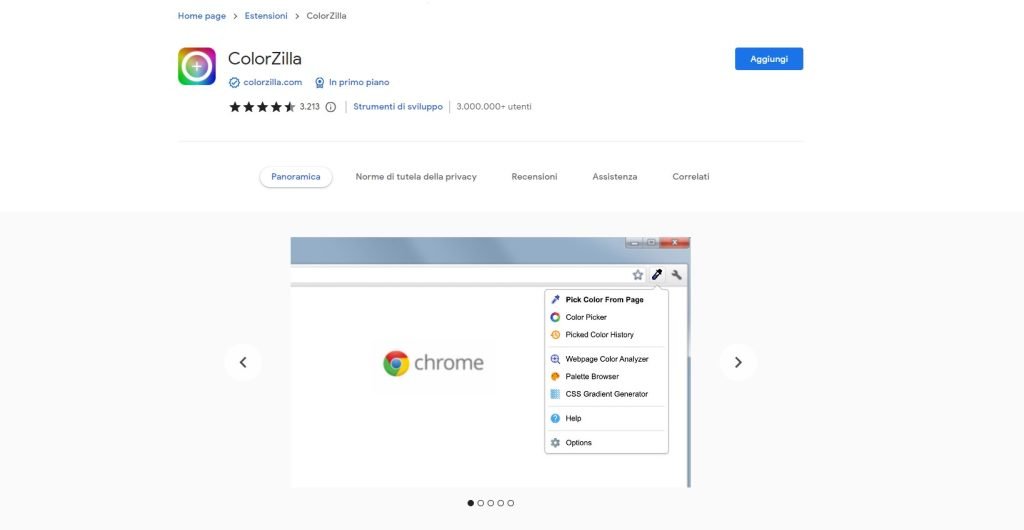
ColorZilla is a browser extension that provides color selection tools and related features. It allows you to capture colors from publications or websites with the goal of maintaining consistent design, making it easy for users to identify the hexadecimal color codes they desire. It is useful for maintaining color consistency in your visual content.
Inshot
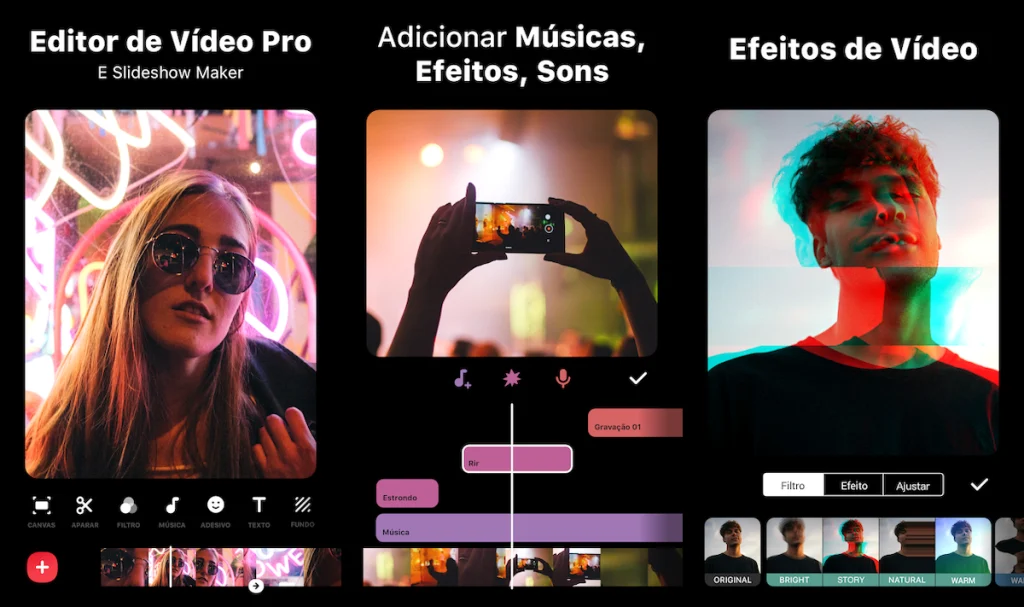
If you want to create high-quality video content directly from your phone, Inshot is an application that offers video editing features. You can cut, add effects, music, and text to your videos to make them more engaging from your mobile device.
VistaCreate
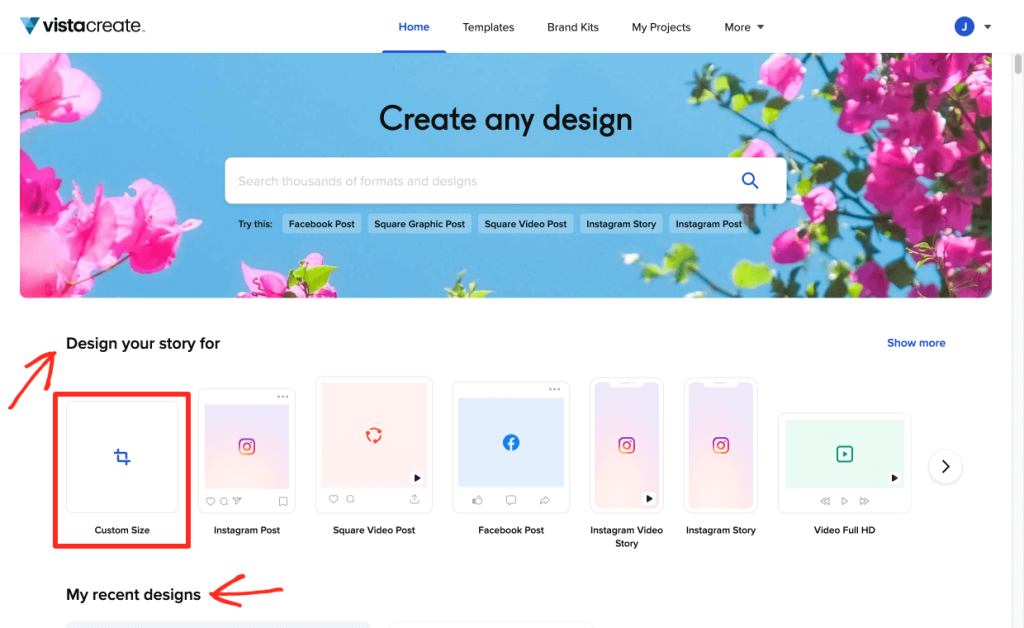
This tool allows you to design impactful visual content starting from templates. It comes with a vast library of creative resources and designs to help you create high-quality graphics.
Adobe Premiere Pro
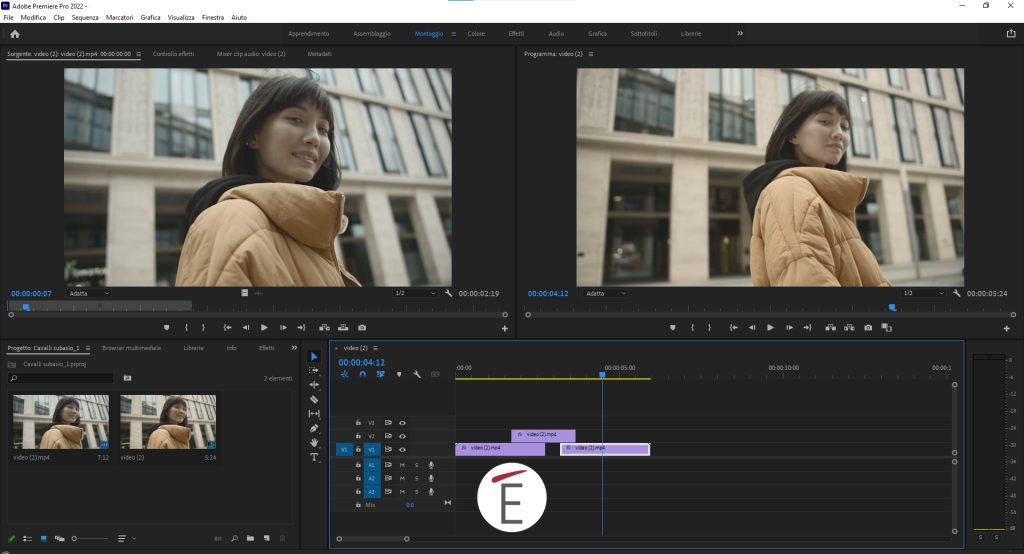
It is a powerful video editing software widely recognized as one of the leading tools for video editing and is often used in the film, television, and online content creation industries. It offers a wide range of video editing features, including non-linear editing, adding special effects, audio mixing, and much more, and is available for both PC and Mac.
CorelDRAW Graphics Suite
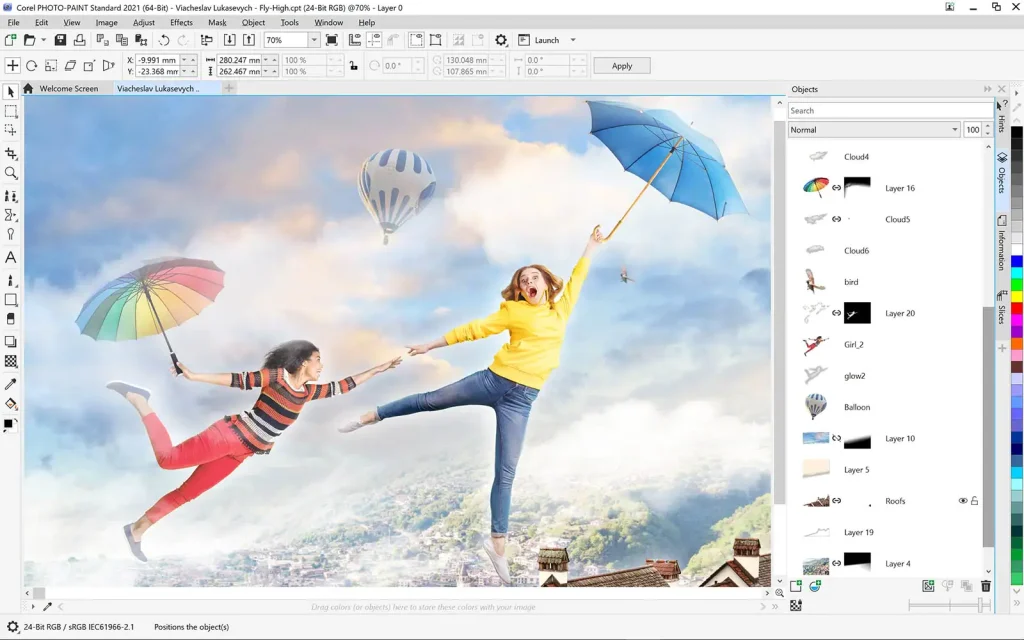
It is an excellent choice for graphic design; we discussed this tool in our article on AI tools for Graphic Design.
Wondershare Filmora
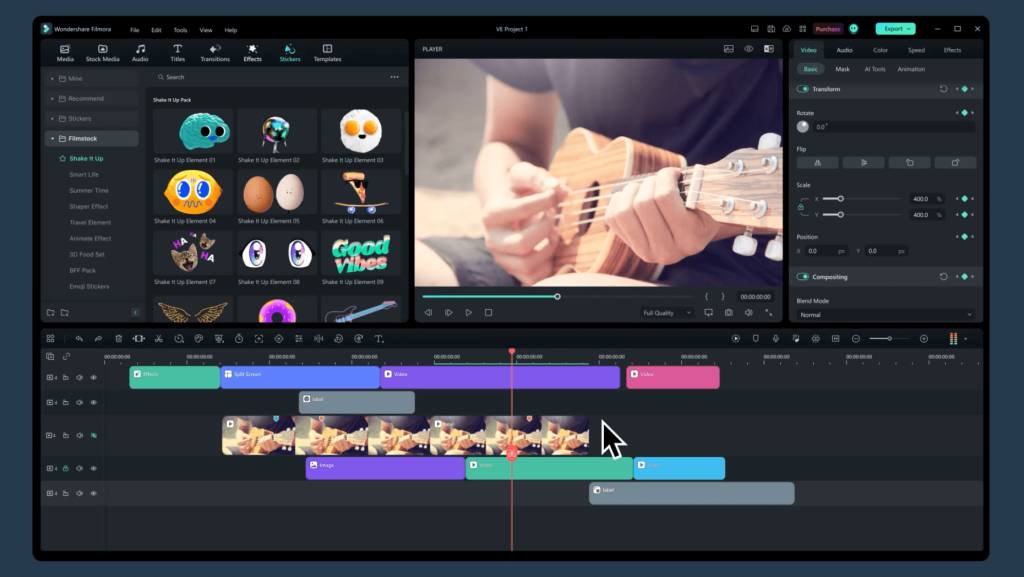
Wondershare Filmora is a video editing platform that allows you to create animated content independently. This software enables you to add audio effects, text, and other customizations and has become one of the most popular video editing software in the industry due to its user-friendliness and professional features.
It is an accessible video editing application for Microsoft Windows and MacOS.
MAGIX Video Deluxe
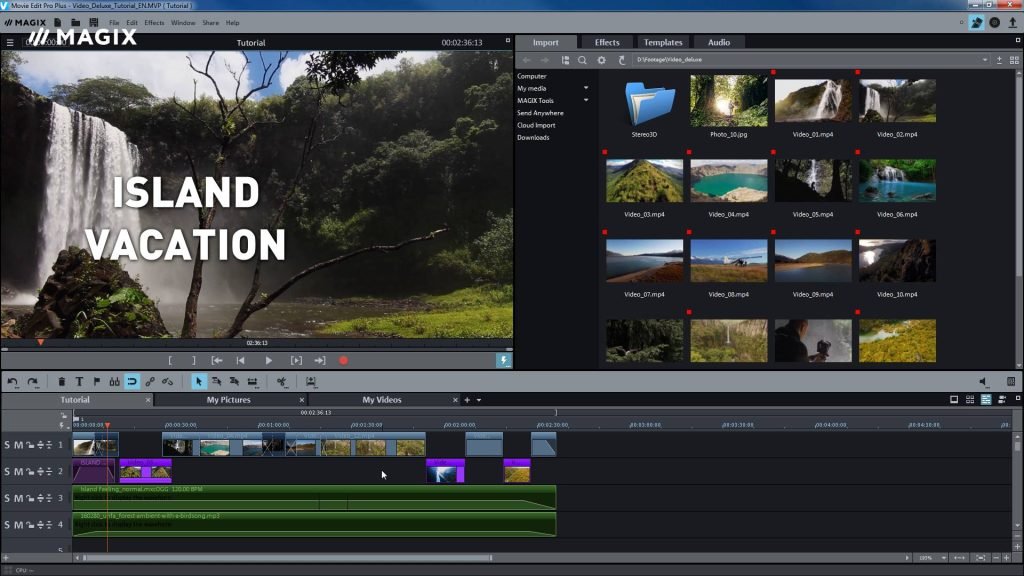
“It is a non-linear video editing software that allows you to create movies with sound, video, audio, titles, transitions, and special effects from various sources. It is known for its intuitive interface and offers helpful suggestions and tutorials to help users improve their video editing skills.
Successful Visual Storytelling Case Study
In the fall of 2020, the renowned feminine hygiene brand, Nuvenia, launched its new campaign called ‘Viva la vulva,’ based on metaphorical images that evoke the shape of external female genital organs.
The chosen images are visually striking and, despite the lack of vulgarity, still achieve the main goal of the campaign: emphasizing that the appearance of female genitalia should not be a source of embarrassment or shame for women.
It can understandably be thought that such a campaign may be too bold or provocative for some, but it should be noted that the goal of the Nuvenia campaign is to break the taboo.
This form of visual storytelling certainly leaves a lasting impression on the minds of those who see it.
Another successful case is undoubtedly represented by P&G’s advertising campaign during the 2014 Winter Olympics, a very effective example of visual storytelling. The story of the athletes and the emotion of the Olympic Games are conveyed through the perspective of mothers.
P&G’s marketing strategy is based on the idea that mothers are the central figures in the lives of athletes participating in the Winter Olympics. It’s the mothers who support them, encourage them, and stand by them during all stages of their preparation and competition.
The campaign draws inspiration from this mother-child connection to create an emotional bond with the audience. By featuring mothers in the video, P&G manages to establish an identification with its target audience, which, in turn, strengthens the connection between the brand and the consumer.
Through this advertising campaign, P&G goes beyond simply selling products to create an emotional connection with the audience. The goal is to make the brand be perceived as an ally in the daily challenges that mothers face. This visual storytelling strategy is recognized as an effective tool to engage the target audience and establish a trust relationship with consumers.
P&G’s campaign emphasizes the importance of emotion in advertising. Instead of merely trying to push products, the campaign aims to evoke feelings in the audience, leaving a lasting impression. This approach shows P&G’s awareness of the importance of emotion in making a lasting impact on consumers’ minds.
Conclusions
In conclusion, we can state that visual storytelling is a powerful tool in the field of marketing and communication. By using images and engaging storytelling, this technique offers an extraordinary opportunity to capture the audience’s attention, create emotional connections, and convey messages with a lasting impact.
Its ability to evoke empathy and understanding, along with its undeniable effectiveness in promoting engagement, makes it an indispensable ally for those who want to stand out in the digital world.
In an increasingly visual and interconnected world, ‘Visual storytelling’ becomes the key to success in contemporary communication challenges, opening unexpected doors to achieve set goals.
